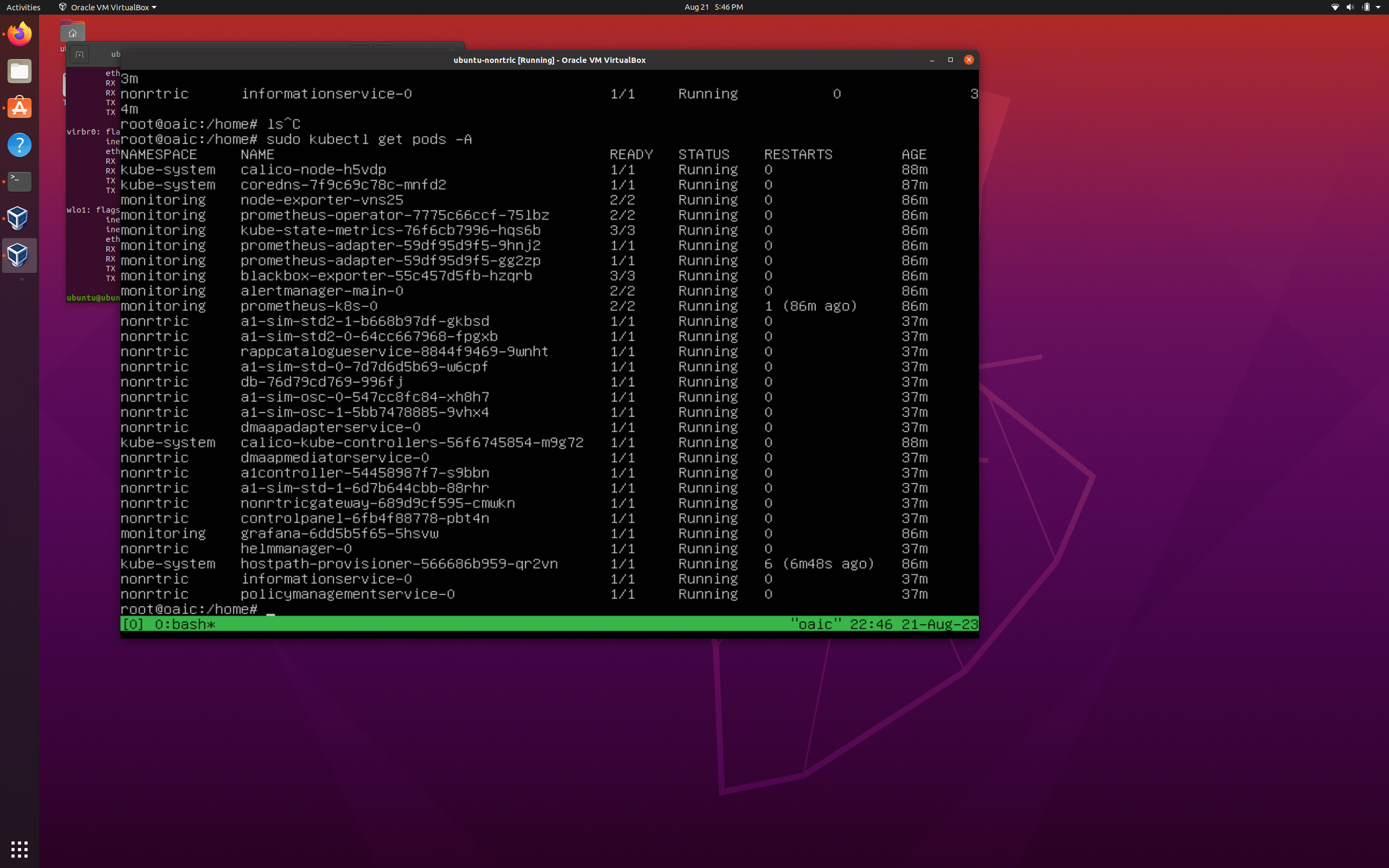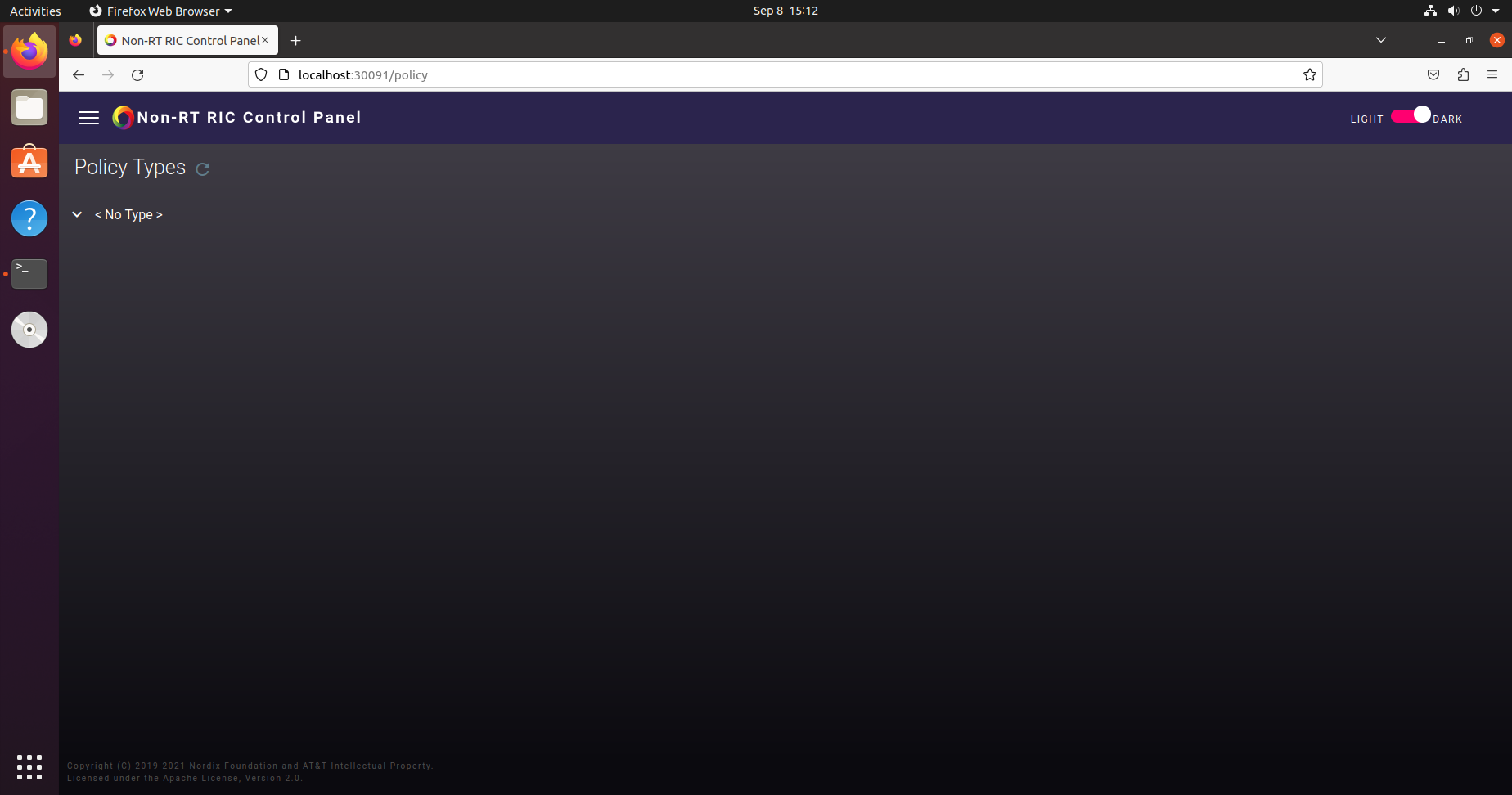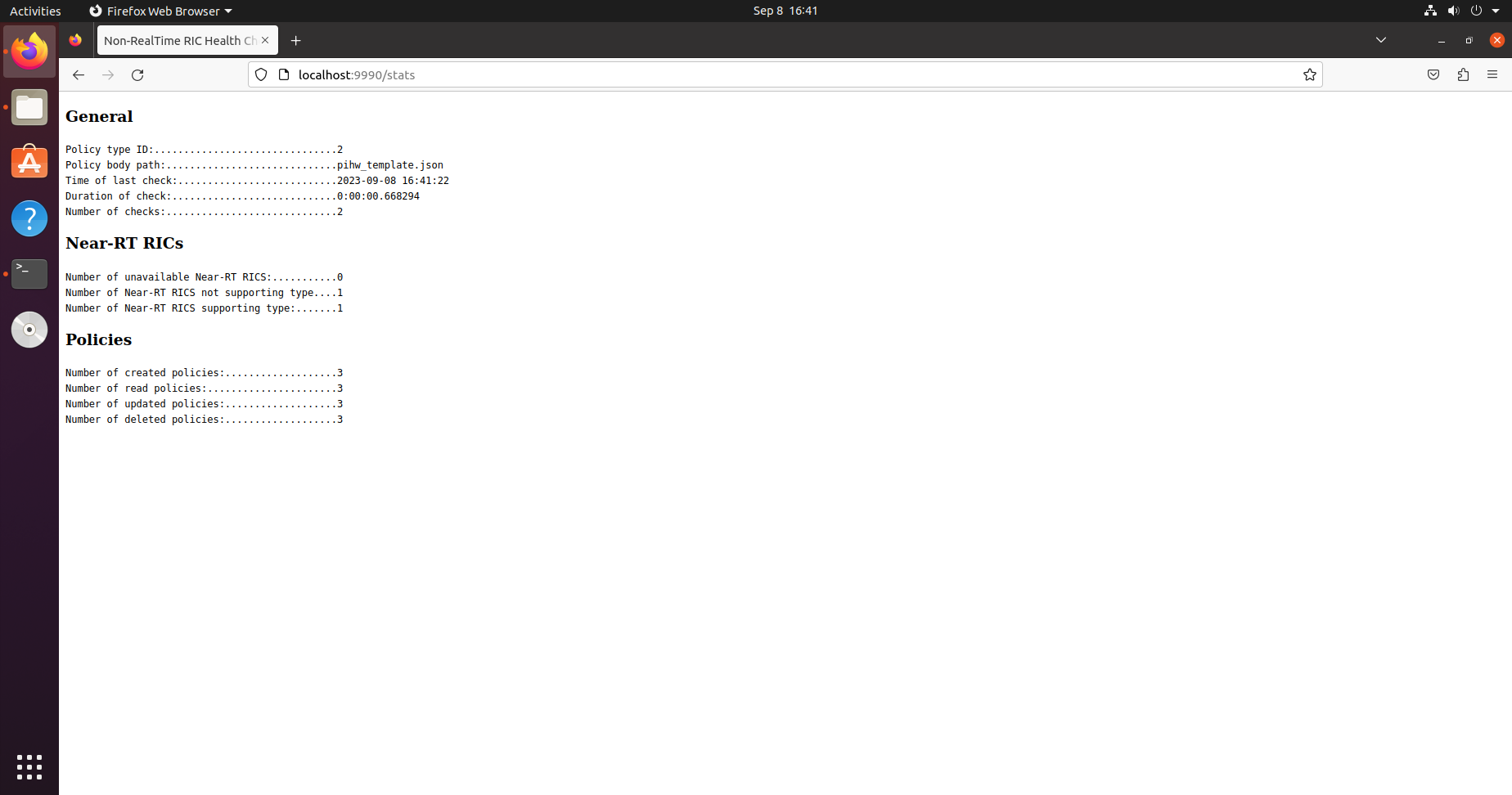O-RAN Non-Real Time RIC Installation Guide
Pre-requisites
System Requirements
For Non-SMO installation
Note
We recommend you to run these installation procedures on a machine with the specs below
CPU(s): 6 vCPUs
RAM: 40 GB
Storage: 60 GB
Installing the Non-Real Time RIC
First install packages and reboot.
sudo apt-get install snapd -y
sudo apt-get install curl
sudo apt-get install git
sudo reboot
After your machine have finished rebooting git clone the following repositories into your home directory
cd ~/
git clone https://github.com/openaicellular/nonrtric.git
git clone https://github.com/openaicellular/main-file-repo.git
The nonrtric repo will contain all the scripts to deploy the Non-Real Time RIC, and the main-file-repo repository will contain all the materials to deploy it.
Run these following commands to setup Kubernetes,
cd ~/
sudo ./nonrtric/smo-install/scripts/layer-0/0-setup-microk8s.sh
Chart Museum,
sudo ./nonrtric/smo-install/scripts/layer-0/0-setup-charts-museum.sh
and Helm v3
sudo ./nonrtric/smo-install/scripts/layer-0/0-setup-helm3.sh
Build the helm charts for the Non-Real Time RIC
sudo ./nonrtric/smo-install/scripts/layer-1/1-build-all-charts.sh
Note
This make take around 30 minutes
Finally, deploy the Non-Real Time RIC
cd ~/nonrtric/bin
sudo ./deploy-nonrtric -f ../RECIPE_EXAMPLE/NONRTRIC/example_recipe.yaml
Run this command to get all your pods.
sudo kubectl get pods -A
Here are the results after you run the command.

Note
It may take a while for all your pods to start running
After all your pods have came up, go to your browser and type in localhost:30091/policy to view the interface for the Policy Management Service pod.
The final results should look something like this

Healthcheck rApp Simulator
Introduction
The Health Check use case test provides a python script that regularly creates, reads, updates, and deletes a policy in all Near-RT RICs that support the type used by the script. A self refreshing web page provides a view of statistics for these regular checks.
Running the Non-Real Time RIC Healthcheck rApp
First install all the package(s) that is required to run this rApp.
sudo apt-get install docker.io
sudo apt-get install python3-pip
Git clone the rapp-healthcheck into your home directory. The rapp-healthcheck repo will contain all the scripts to run an example rApp using the nonrtric components policymanagementservice(PMS) and the A1 simulators to simulate rics.
cd ~/
git clone https://github.com/openaicellular/rapp-healthcheck.git
Go into the repo’s src folder and install all the python dependencies.
cd ~/rapp-healthcheck/src/
pip install -r requirements.txt
Go to the test folder and run the start.sh script
Note
Please check and make sure your start.sh script has the right versions of PMS and A1 simulator specified.
cd ~/rapp-healthcheck/test/
sudo ./start.sh
The script will finish when the policy type is registered and synched in PMS.
Now go to the src folder and start the use cases
cd ~/rapp-healthcheck/src/
python3 main.py
As default, the script uses the “Hello World” policy type with ID “2”. To create the instances it uses the body file rapp-healthcheck/src/pihw_template.json. The body file contains the string “XXX” as a parameter value. This string will be replaced with dynamic data during creation. It is possible to provide a custom policy type and body file to the script at startup.
To see the web page, navigate to localhost:9990/stats. The page refreshes itself with the same interval as the script uses.
Your results look something like this

To stop PMS and the simulators, run the stop.sh script.
cd ~/rapp-healthcheck/test/
sudo ./stop.sh
Source: https://github.com/o-ran-sc/nonrtric-rapp-healthcheck